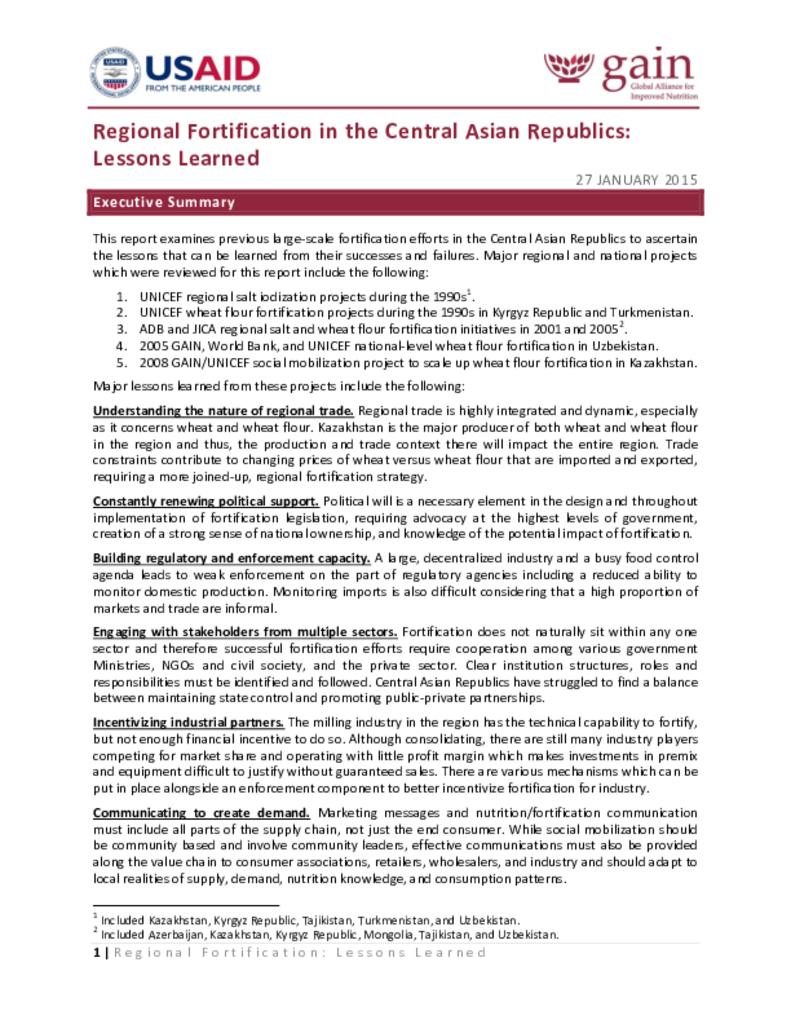The Central Asian Republics have seen a deteriorating nutrition situation since the breakup of the Soviet Union, when food subsidies and Soviet development aid ceased and distribution networks for fortified foods failed to be maintained. Micronutrient deficiencies in the area, particularly of iodine and iron, are higher than in many other developing regions for geographical and socio-economic reasons.
In 2014, GAIN initiated a new USAID-funded regional fortification project which aims to build on past and ongoing efforts in the region and to ensure adequate micronutrient fortification of flour is consumed, including imported wheat flour into Afghanistan (primarily from Kazakhstan) and edible oil which is imported into Afghanistan (primarily from Pakistan).
This report examines previous large-scale fortification efforts in the Central Asian Republics to ascertain the lessons that can be learned from their successes and failures. The results of the report can help new initiatives ensure better coverage of fortified foods throughout the region including Afghanistan.
